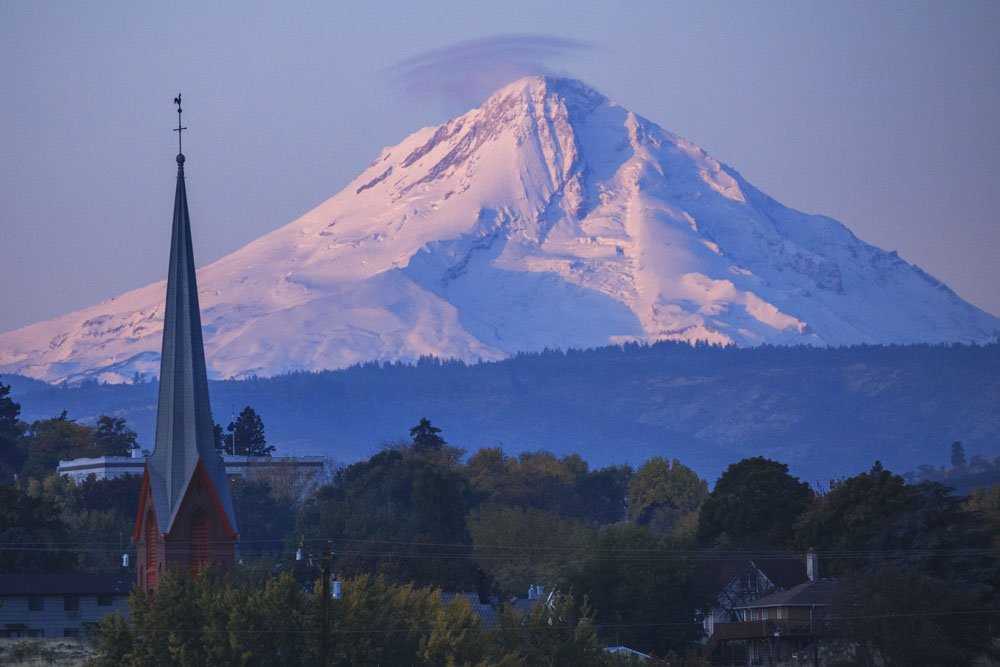This morning we are greeted by clear skies and a perfect view of Mt. Hood bathed in alpenglow. The rest of the day has been clear with calm winds, the perfect reminder of why autumn is so lovely.
Call +1.800.397.3348 or contact your travel advisor
Call +1.800.397.3348 or contact your travel advisor

Dexter Sear, Videographer
View all info
This morning we are greeted by clear skies and a perfect view of Mt. Hood bathed in alpenglow. The rest of the day has been clear with calm winds, the perfect reminder of why autumn is so lovely.
Jeff Litton is a dedicated advocate for our planet, igniting a passion within people to cherish our Earth. His circuitous journey involves leading individuals into the untamed wilderness, where he unveils the hidden splendor of the natural world. Jef...
Read MoreDexter grew up in England where a love for exploring the countryside ignited a lifelong passion for discovering natural history and embarking on adventure. As a teenager, two trips to India sparked a fascination with insects and a desire to share a “...
Read MoreShare Report
4/24/2025
Read
National Geographic Sea Bird
Unseasonably warm and dry weather continued to grace us as we proceeded with our expedition down the Columbia River. The morning was crisp as we disembarked in Hood River, Oregon, but quickly warmed up as we boarded our coaches. Our explorations began at Multnomah Falls, the number one tourist attraction in the state of Oregon. After we experienced this astounding cascade, some of our guests proceeded to Beacon Rock for a scenic climb up this 800-foot tall, aged lava plug. Others went to the Bonneville Fish Hatchery where we visited a local icon, Herman the sturgeon. Then both groups of explorers met at the Columbia Gorge Interpretative Center for Syncline wines and an overflowing helping of intriguing local history. As the superb weather continued, we voyaged back to National Geographic Sea Bird for a lovely afternoon of classic cruising down the Columbia River. Guests enjoyed the sun on deck or an engaging presentation on how climate change is affecting migratory birds. Complimentary water-level views of Multnomah Falls followed, and our last transit through a lock of this trip – a lovely passage through the Bonneville Lock and Dam. Photos by Doug Crispin and Alex Rubenstein
4/23/2025
Read
National Geographic Sea Bird
We spent our last day on the warm rain-shadow side of the Cascade Mountains as we continued west. Spring is in full force, or as full as it can get with nine inches of rain a year. The green grass-covered hills are already turning pink and soon to yellow as temperatures climb and the spring flora succumbs to drought. We admired the tenacity of these plants as they bravely flowered with minimal resources. From the brilliant canary-yellow of the arrowleaf balsamroot flowers to the azure blue of the native larkspur, the colors of the rainbow were represented in the delicate structures of flower petals. Spring is in the air and on the hillsides as well.
4/22/2025
Read
National Geographic Sea Bird
We awoke today with National Geographic Sea Bird anchored at the confluence of the Snake and Columbia Rivers near Sacajawea State Park. A few intrepid explorers set out for a daily survey of birds by way of Zodiac, and we were able to identify 15 different species of birds. Highlights for some guests were seeing a pair of wood ducks and a few big male turkeys, or toms, strutting around the park like they owned the place. After breakfast, all 58 guests disembarked, boarded our trusty motor coaches, and headed into the Walla Walla Valley where we learned about some of the human history and regional wine production. A wildlife highlight of the day was getting an up close and personal view of a Northern harrier, a small slender raptor, near Mill Creek. We’re looking forward to our journey over the next few days, continuing west and down river towards the Pacific Ocean.